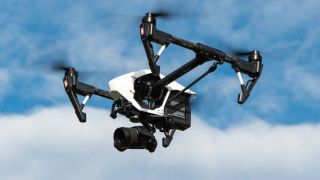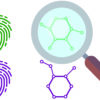For some years now, drone technology has been billed as the next big thing. For many, the main associations which spring to mind when thinking about the technology are their uses in military defense, surveillance, awe-inspiring landscape photography and wedding videos. In the UK, we have also experienced the negative side effects of the technology, including the disruption caused at Gatwick and Heathrow airports.
Despite these incidents, drones have huge potential for businesses across many industries, including retail, logistics and healthcare. McKinsey recently investigated how the technology could be used for multiple commercial applications and estimate that by 2026, commercial drones will have an annual impact of $31 billion to $46 billion on GDP in the US alone. Alongside these commercial benefits, this technology also presents many societal benefits such as reducing crime and saving lives through their wide and fast surveillance abilities.
The ability of drones to offer these benefits is due to the technology’s ability to capture data from its surroundings and to process this to inform actions. Whether autonomous or supervised, drones have evolved now to have both great range and precision, able to collect a constant stream of various data depending on what sensors are integrated. The application of artificial intelligence (AI) to these data streams will only improve the value of drones.
However, as this technology is still evolving and organizations are experimenting with exactly how it can be used to drive efficiencies, reduce carbon emissions and improve safety and security, they also need to overcome numerous challenges. For example, organization need to be clear about integrating drones with their existing technology and eliminating concerns end-users may have around privacy. Here, we explore some of the less obvious benefits the technology can bring to various industries and how to tackle the issue of trust.
Danger zones
The surveillance potential of drones can really come into its own when it comes to reducing human risk. The range and agility of the technology, combined with its increasing affordability, allows drones to access and assess areas that would otherwise pose a lot of risk to humans. For example, in the aftermath of a natural disaster or explosion when searching for missing or injured people, or to support in the inspection of tall structures or remote oil rigs. The technology can allow teams to conduct rigorous search and rescue or make repairs as quickly and safely, without putting human life in unnecessary danger.
Additionally, the technology can be used to track missing persons, suspects on the run, and in the detection of illegal activity by law enforcement, resulting in significant cost savings. For example, in cities in the UK, police have found the use drone technology to be far more cost effective in scenarios such as policing football matches or sending out a surveillance team via police helicopter to conduct searches.
Remote delivery
One of the main criticisms of delivery by drone technology, is that it is unlikely to catch on because the existing infrastructure, through the postal system or scheduled van delivery, meets consumers’ needs. However, outside of the environmental improvements in reducing transport emissions by opting for our shopping to be delivered via drone, there are places where this can be essential.
In remote areas that are cut off from reliable regular transport networks, the delivery of medicine for example, can be relatively cheap and improve and even save lives. Communities without road, rail or air links, either permanently or as a temporary result of conflict or natural disasters such as a hurricane or earthquake, can rely on drones for the fast delivery of essentials, including food packages and medicine. People awaiting rescue teams in dangerous conditions will also be among the potential beneficiaries of drones’ lifesaving delivery potential.
Agriculture and assessment
Many farms in countries like the US and Australia are too big for a single person, or even a team of people, to be able to inspect and monitor their crops and livestock. Previously, some of the largest farms have depended on the use of small planes to get access to certain areas of farmland, which are expensive to run. Drones offer a cost-effective alternative that allows farmers to visit remote areas of their farms much more often.
The technology can also be used to treat crops with on-board sprays with great precision and allow farmers to treat entire fields far more quickly than traditional machinery, which would either require farmers to drive machinery long distances or purchase multiple machines to be kept in the area.
Similarly, huge warehouses, with vast amounts of inventory, can take weeks to stock check, a process that for many businesses needs to be accessed in real-time, adding to the scale and difficulty.
This level of data collection and analysis is beyond even the largest teams of people. Drones allow for quicker and continuous assessment of vast spaces, both indoors and outdoors, and ultimately will drive improvements in agricultural processes and efficiencies by applying this data analysis to ongoing operations.
Telecoms
Another example of how the technology can benefit society and solve a recurring problem of providing temporary structures, such a festivals, pop-up venues or emergency shelters with network coverage and Wi-Fi, is through adding telecoms equipment to drones. It works by essentially functioning as a short-term hotspot for that location. This same use can be applied in areas where the power has gone down following a natural disaster or outage, reconnecting communities in an emergency and again assisting in locating individuals.
Samsung is already deploying drones with AI capabilities to assess the installation of 4G and 5G antennae, combining the aforementioned safety benefits with the alternative solution of connectivity.
Overcoming the drone trust deficit
Across much of the technology sector, the trust deficit still pervades when it comes to drones. It was recently found that only 23% of UK adults support deliveries by drone because of the risks associated with it, whether it is about their deliveries being dropped, drones stolen or delivery drivers losing their jobs. Negative stories, whilst rare, do have an impact on the general perception of drone technology, and therefore organizations need to be cognizant of the speed at which they deploy them.
However, the benefits drones can provide in certain circumstances can be substantial, leveraging their prodigious data-capture abilities and allying these with AI-driven analysis to give valuable insights and drive better decisions. As the technology continues to improve in accuracy and ability and organizations refine how the technology can be used to solve complex problems, they will provide increasing value to society and industry. Whilst the sci-fi film imagery of our skies buzzing with drones will for the moment at least remain a fantasy, what is clear is that drone technology will continue to play a vital role both now and in the years to come.
Rohit Gupta, Head of Products and Resources, Europe, Cognizant.



